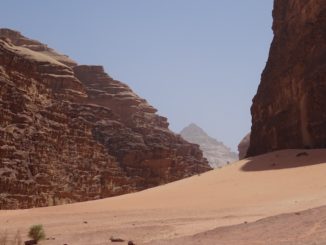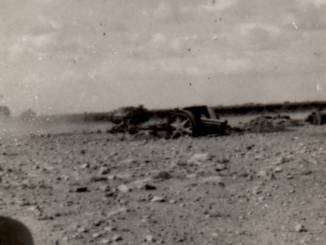In the original Desert Mysteries series, I wrote about a 1939 edition of Blackwood’s magazine bought at an antiques fair that led me to research the lives of the men who had read it and to discover their youthful desert war heroics.
In the final part, I related how my interest in desert warfare had been inspired by my late uncle who had been a serviceman in Transjordan and had died there in the year before the Blackwood’s magazine was published.
For this Desert Mysteries Redux, I will recount the “desert mystery” of what happened to my uncle.
My paternal grandparents were married in 1911 and, over the next five years, they had two sons and a daughter before they were divorced in 1925.
Before WW2, divorce in the working class was a rare occurrence, primarily due to the cost involved, with most couples simply separating but the circumstances surrounding my grandparents were such that it went to court with the proceedings eventually being retained in the National Archives.
As a result of the divorce, my father and his brother were placed with an elderly couple out in the Oxfordshire countryside in a “foster home”, far away from where they were born in London, and where they lived with three other pairs of brothers who were all orphans. Their sister was taken into the family of an aunt before being placed “in-service.”
My father, his brother and sister never saw their mother again and were also unaware of the half-sister they had, the result of my grandmother’s affair.
My uncle’s service life began when he was taken on, aged sixteen, as a trade apprentice at RAF Halton in 1929 and, after completing his apprenticeship, joined a squadron in North Weald as an Aircraftsman in 1931.
It is indicative of the class snobbery that existed in the pre-WW2 RAF, that, to fit in, he had affected a double-barrelled surname by hyphenating his middle name and original surname.
He must have shown sufficient aptitude for being trained as a pilot that he was sent out, via Gibraltar, to join the Flying Training School at Abu-Sueir in Egypt in 1935.
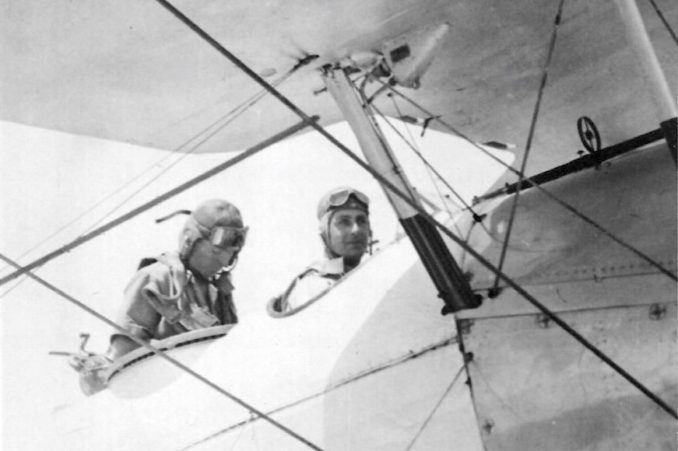
© John Tull 2024, Going Postal
In the 1920s, the then “Chief of Air Staff”, Hugh Trenchard had used the RAF to demonstrate to the Government that a relatively small number of aircraft and servicemen could be used to “police” large areas of territory that because of climate or topography would have needed a much greater force of Army personnel and equipment.
Ultimately, it was a demonstration of “low cost” RAF versus “high cost” Army when the independence of the RAF was at risk and the Government had a parsimonious budget for maintaining the control of rebellious colonies and protectorates.
Although it kept the RAF’s independence as a fighting force, this did however have a deleterious impact on the RAF itself. To ensure maintenance of “low cost”, progression in the development of the aircraft technology used became restricted, resulting in a subsequent lack of readiness at the start of WW2. The RAF fighting strategies and tactics also stagnated and did not progress to be ready for those of the emerging Luftwaffe, as shown by the failure of the RAF in the Battle of France.
My uncle made his first solo flight, aged twenty-two, in an Avro Tutor on 31st of December 1935 in Abu-Sueir and was subsequently placed on active service in “air policing” as a Sergeant-Pilot from September 1936. He served with various light bomber squadrons in Helwan and Ismailia, Egypt and Ramleh, Palestine through 1936 and 1937 flying aircraft such as the Vickers Vincent, Hawker Hart and Hardy, Avro Audax and Westland Wapiti.
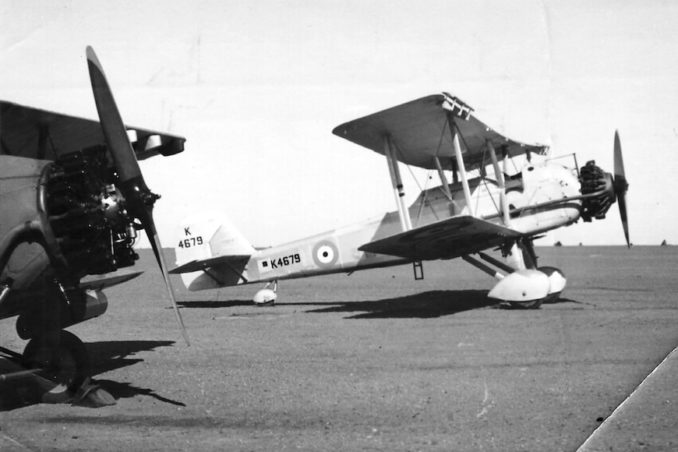
© John Tull 2024, Going Postal
The role of his squadron was to be the “eyes” of the patrolling RAF armoured car sections (using Rolls-Royce armoured cars – see Desert Mysteries, Part Four) in policing the various Arab gangs seeking to disrupt the British mandate in Transjordan.
When spotted, the Arabs would either scatter, set up defensive positions or hide amongst local villagers. An aircraft on discovering an Arab gang would drop messages to the armoured cars and direct them to where the gang was. In hilly areas, the Arabs would go into caves which the RAF would then bomb to encourage them to come out.
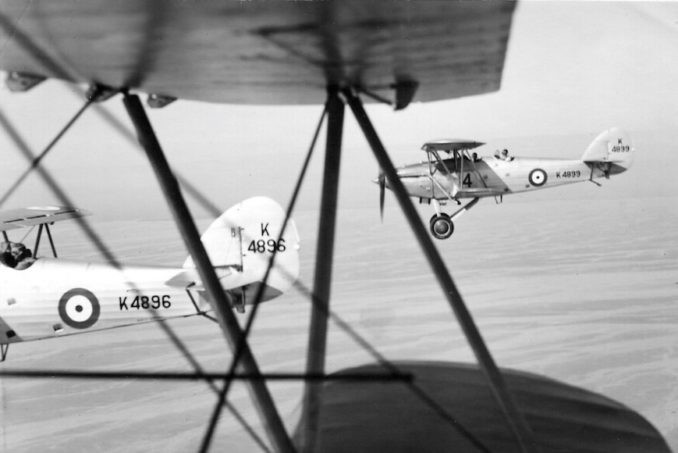
© John Tull 2024, Going Postal
On the 11th of October 1938, flying a Hawker Hardy with his regular wireless operator/air gunner, he “proceeded on an emergency call for air assistance” from an Army unit that had been surrounded by hostile Arabs south of Hebron in Palestine.
Arriving in the Hebron area with another aircraft from the same flight, both aircraft were hit by rifle fire from the ground damaging their radiators. The other aircraft managed to land near a main road and the pilot and his WOP/AG were rescued by the Army unit.
The damage to my uncle’s Hawker Hardy was, however, such that it could not be landed safely, so the crew had to take to their parachutes.
In the memoirs of my uncle’s WOP/AG, he recounted that he climbed out of his dorsal position and stood on the trailing exhaust pipes from the engine. His pilot then passed him his revolver and shook his hand before the WOP/AG jumped off. As the WOP/AG descended on his parachute, he saw his pilot’s parachute open some distance away.
When the WOP/AG landed, he was chased by the Arab gang but managed to get away to a friendly village that took him in, dressed him in a disguise and hid him until an Army unit, led by search aircraft, discovered him later.
All RAF personnel carried a “goolie chit” promising in Arabic a substantial payment if the crew member was returned intact. Apparently, the friendly village received the equivalent of £500 for the WOP/AG.
Search flights were sent out from Ramleh to look for my Uncle, including ground searches by an RAF armoured car company, until my Uncle’s crashed aircraft was found on the 12th of October but with no sign of the pilot.
So, what had become of my uncle who eventually in November 1938 was posted as “missing, presumed killed in action”?
His WOP/AG, who was still serving in Palestine in 1941 although now flying in Westland Lysanders, said in his memoirs that he had heard of an unconfirmed report which stated that part of my uncle’s uniform had been found in a cave, his body down a disused well and that he may have been stoned to death by the Arab women.
In reality his fate is unknown and neither the MoD nor the Commonwealth War Graves have any record of his final resting place and, with the passage of time, it will probably never be known and so will remain a “Desert Mystery.”
As with most servicemen killed between the wars, my uncle is not commemorated on any memorial.
His WOP/AG survived being a prisoner of war taken to Italy, having been captured during the Desert War, but unfortunately, I never met him as I found out about him through the relevant RAF squadron association only after he had died in 2009. However, from the various letters he had written to the association’s newsletter, it appears that he never forgot my uncle.
In Desert Mysteries Redux – Part 2, we’ll take a drive with my uncle and his mates to see the mysteries of the desert.
© text & images John Tull 2024

